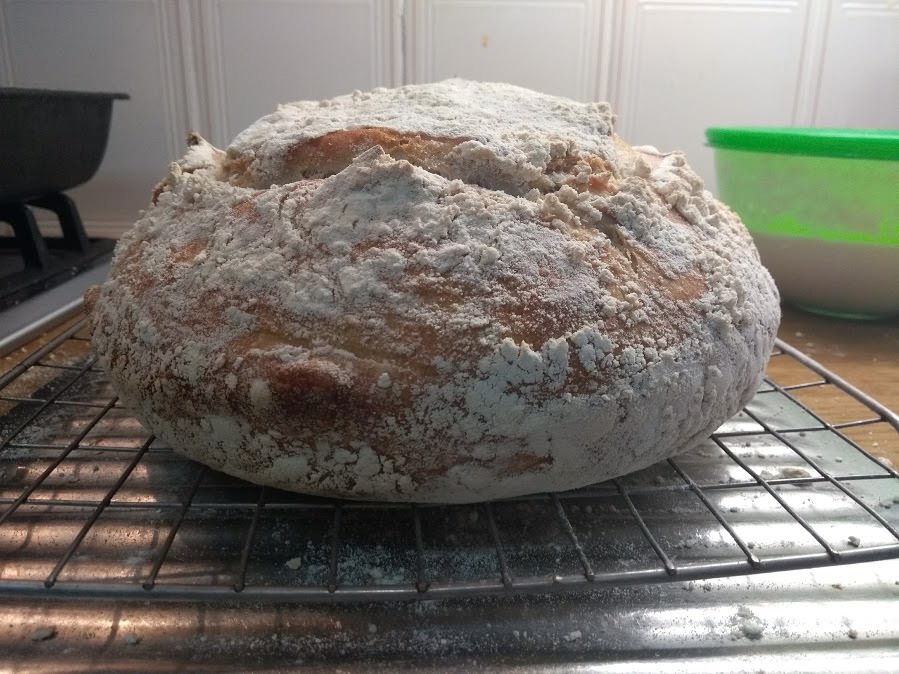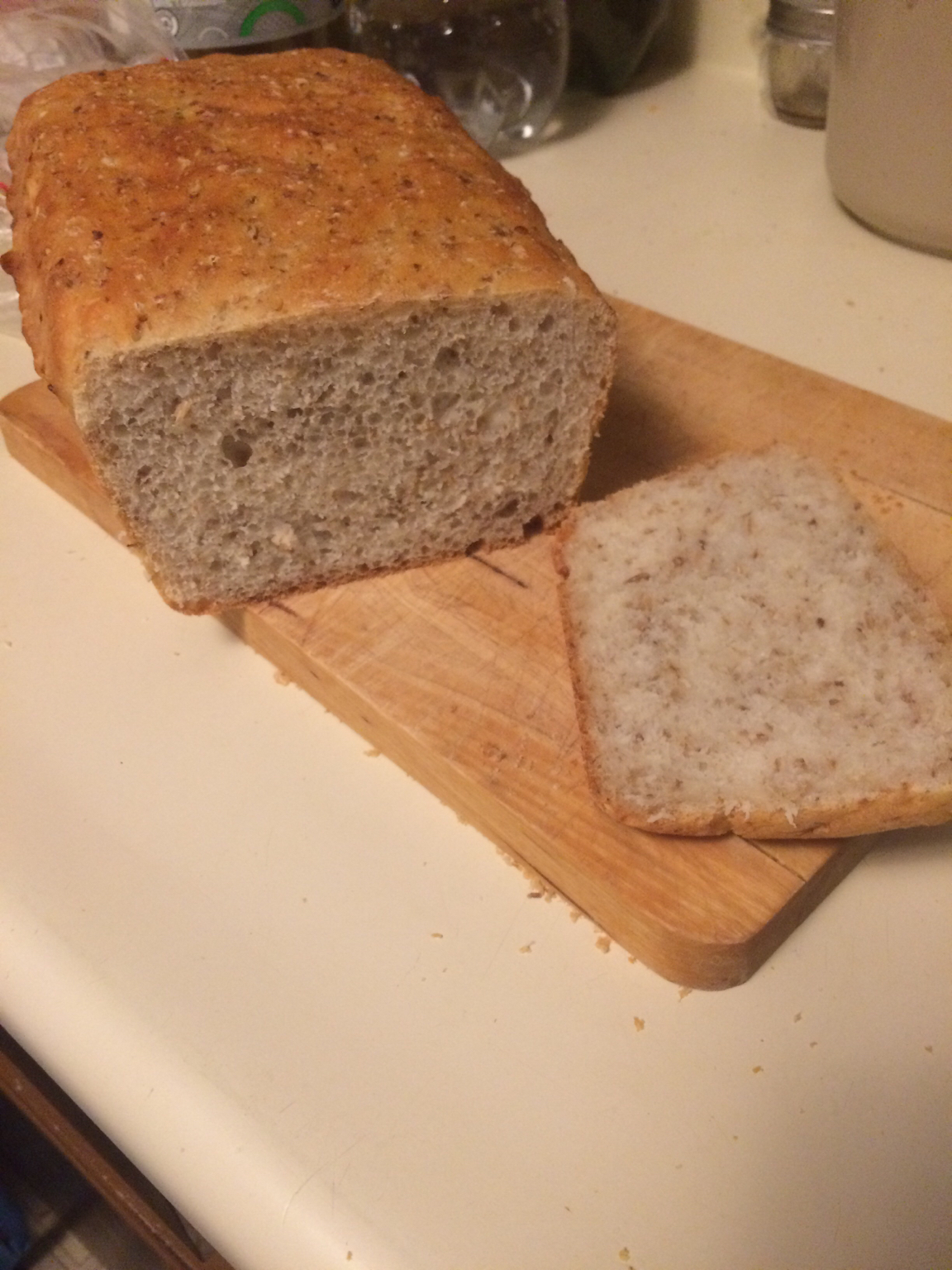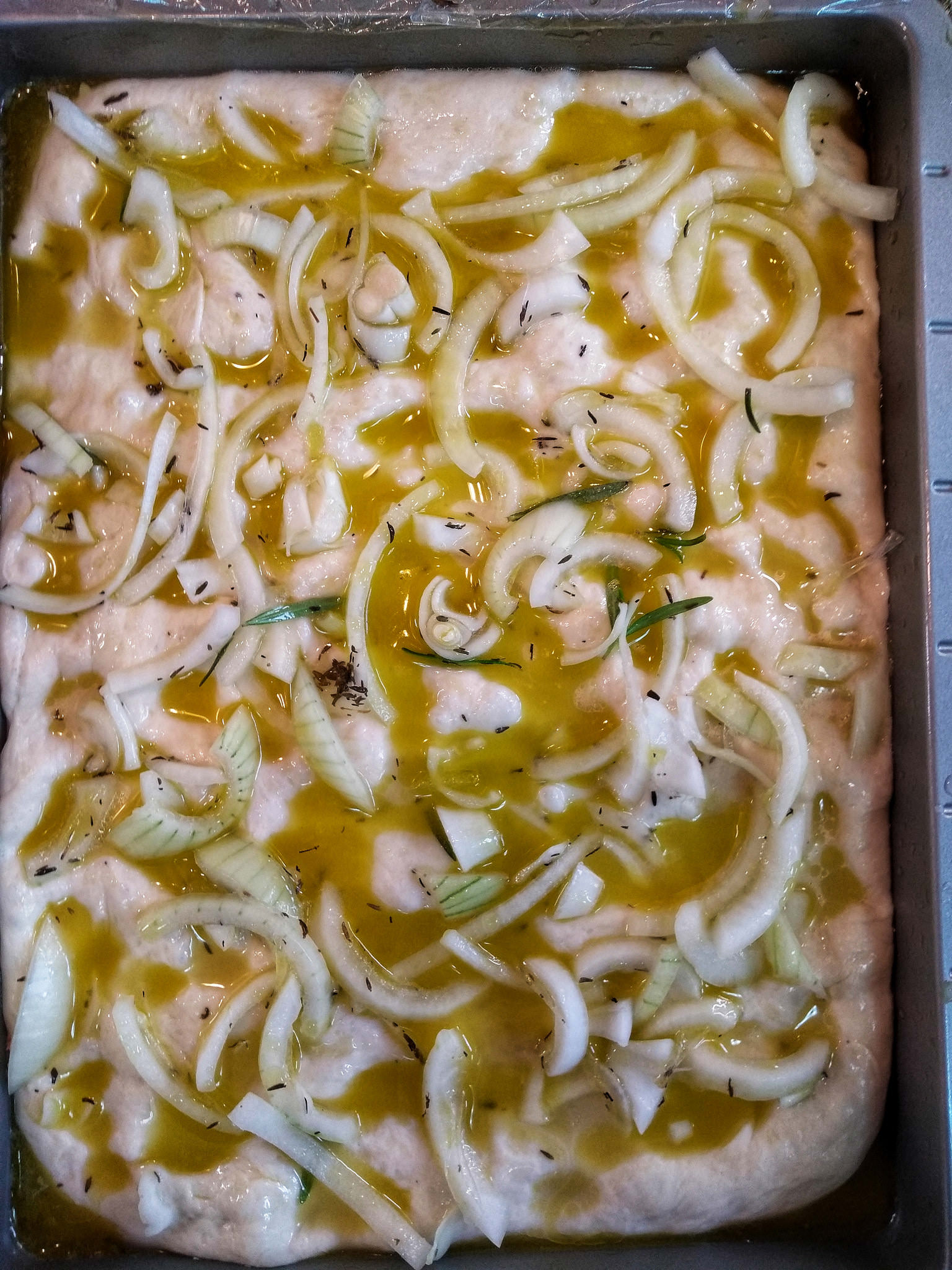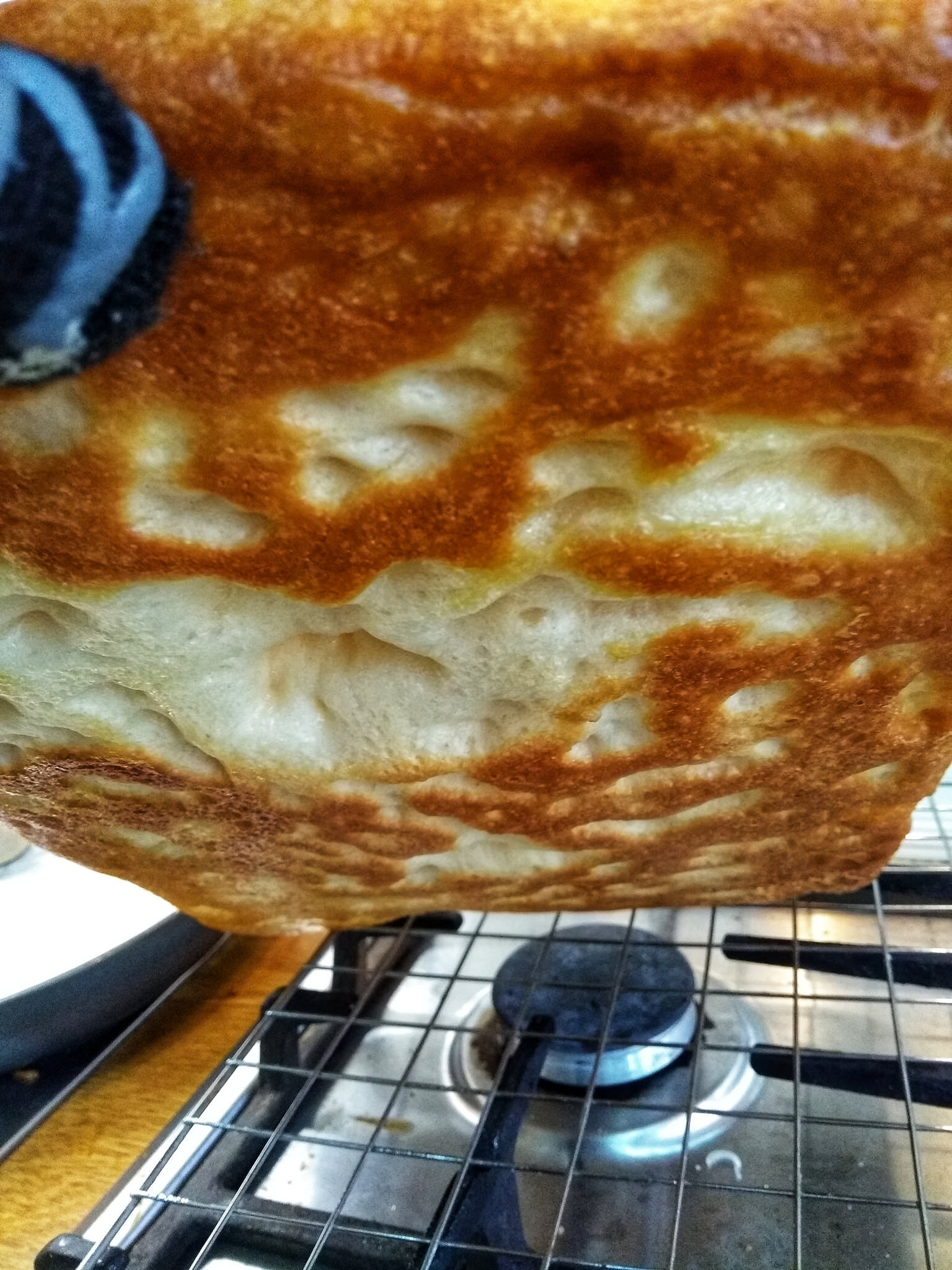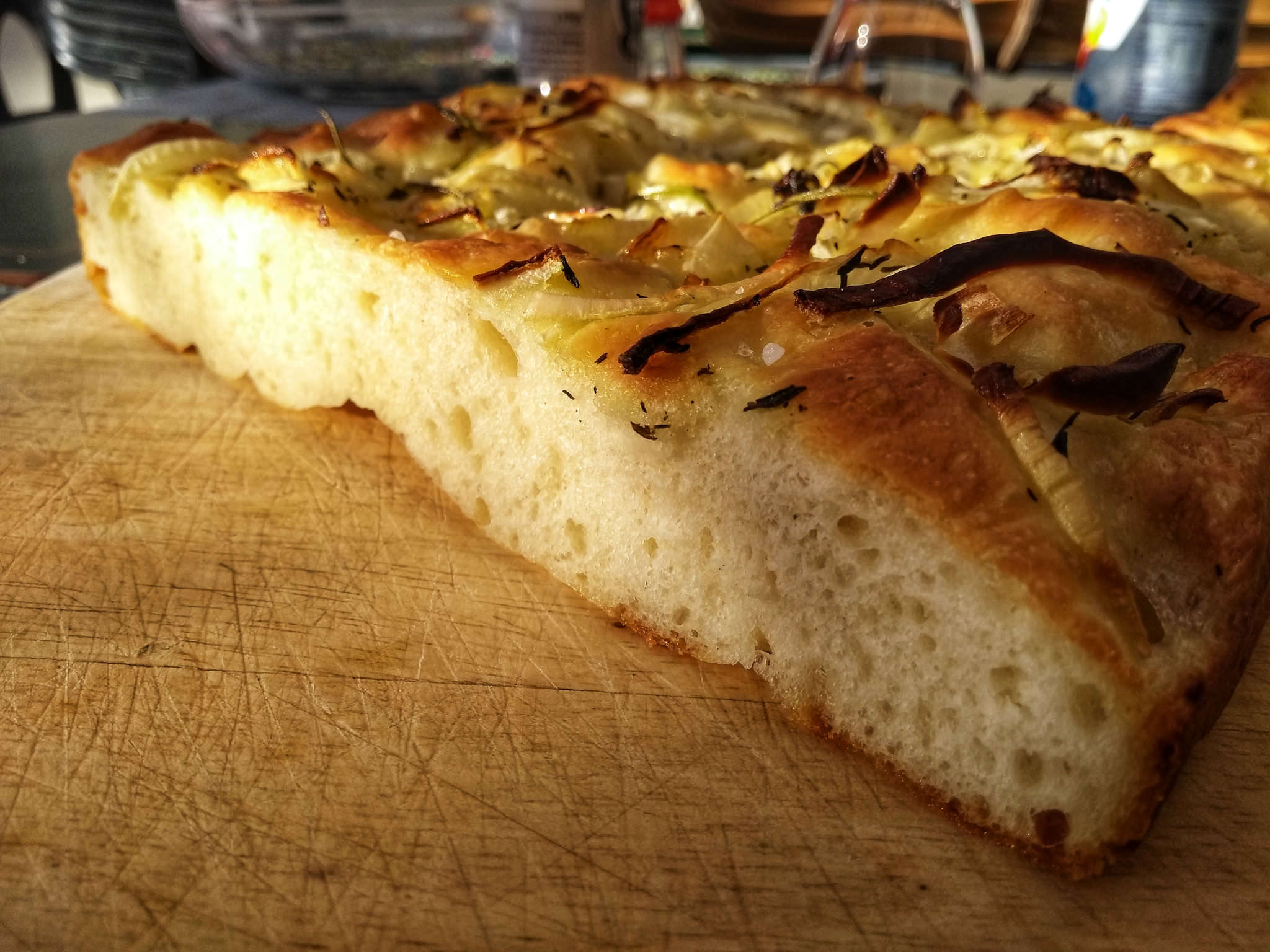You are using an out of date browser. It may not display this or other websites correctly.
You should upgrade or use an alternative browser.
You should upgrade or use an alternative browser.
Homemade Bread Thread
- Thread starter deadfall
- Start date

Help Support Homebrew Talk - Beer, Wine, Mead, & Cider Brewing Discussion Forum:
This site may earn a commission from merchant affiliate
links, including eBay, Amazon, and others.


Eric'bws pumpkin challah.
Last edited:
Made this one for my boys. 18 months and 4. They cry if they don’t get a piece of this for dinner. The 18 month old I think
View attachment 549364
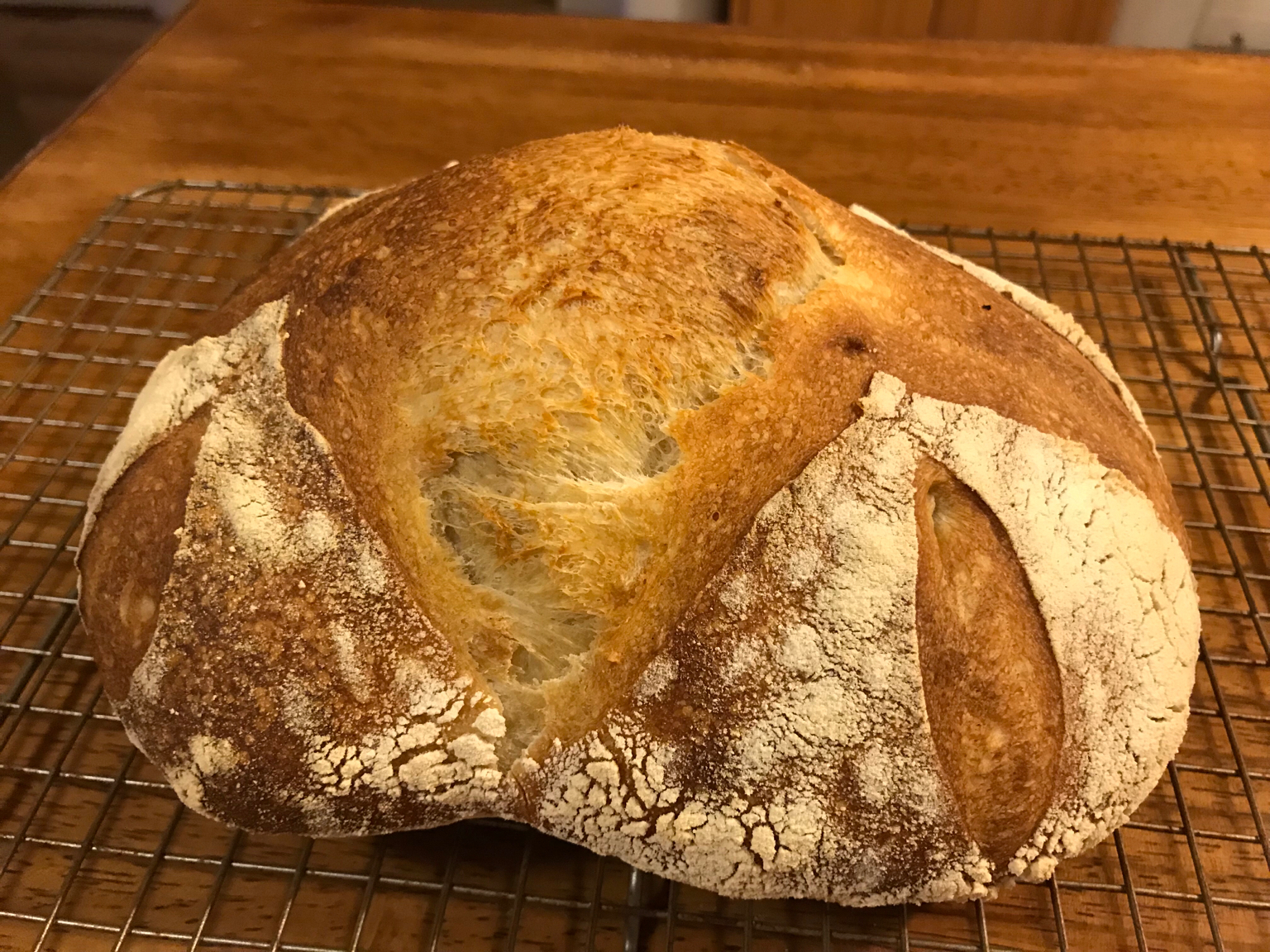
Still working on my technique. Not sure I could improve the flavor but there is definitely something to the orientation of the gluten during the final stretch and final shaping that makes a big difference in the shape. I messed this one up and my boule is more of a football shape.
Edit: money shot
View attachment 549365

After years of trying to find how they secret to making bread with large irregular holes, I think I may have gone too far in that direction.
EDIT 2: what the heck happened to my pictures????
View attachment 549364

Still working on my technique. Not sure I could improve the flavor but there is definitely something to the orientation of the gluten during the final stretch and final shaping that makes a big difference in the shape. I messed this one up and my boule is more of a football shape.
Edit: money shot
View attachment 549365

After years of trying to find how they secret to making bread with large irregular holes, I think I may have gone too far in that direction.
EDIT 2: what the heck happened to my pictures????
Last edited by a moderator:
- Joined
- Mar 18, 2012
- Messages
- 2,418
- Reaction score
- 3,058
That looks delicious I'd cry too!They cry if they don’t get a piece of this for dinner.
ericbw
Well-Known Member
- Joined
- Dec 11, 2012
- Messages
- 3,592
- Reaction score
- 1,225
Nice!
applescrap
Be the ball!
5 min a day artisan bread recipe, first attempt here. Dont know how it tastes, gave them away today. The idea of a bucket in the fridge from eric sent me looking. Thanks for the inspiration found here. [emoji4]
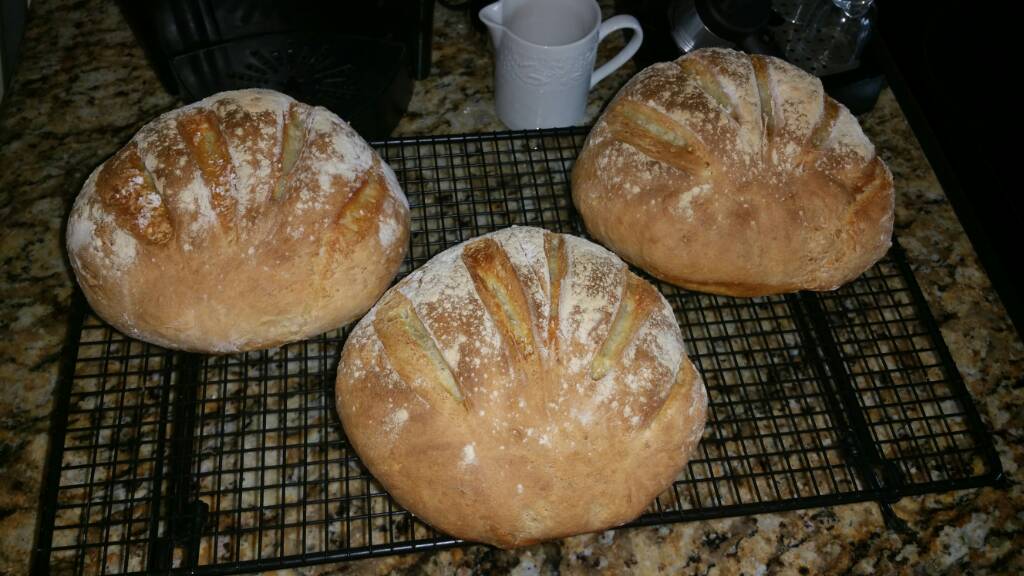


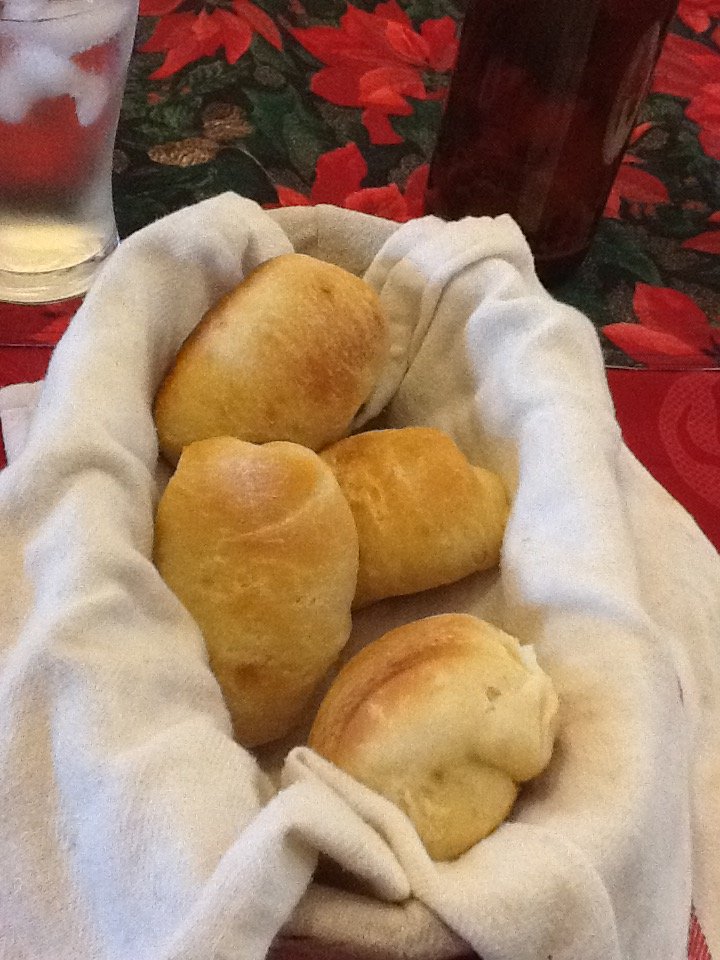
applescrap
Be the ball!
Try two! Didnt let it sit out from fridge long enough.
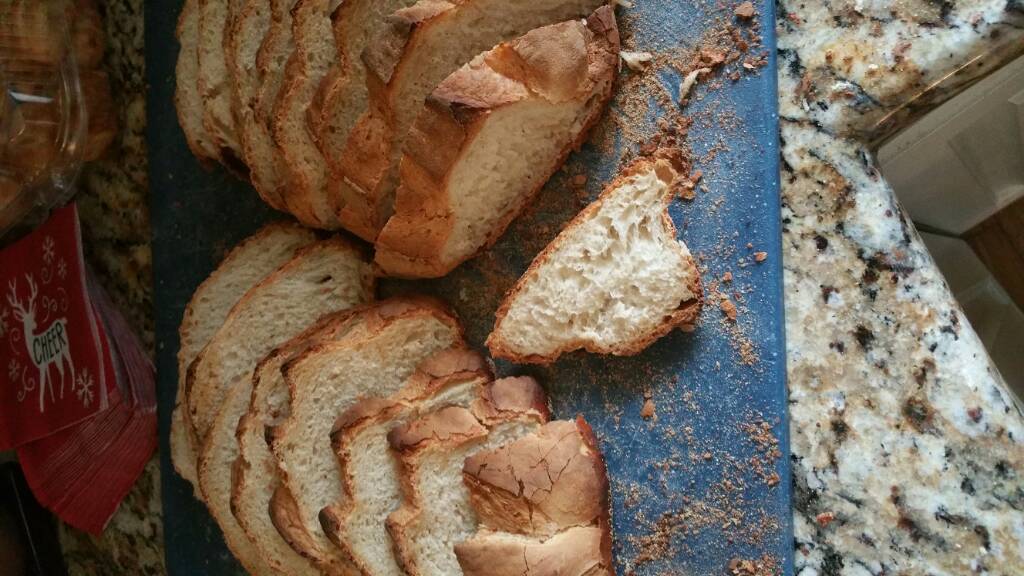



Did you bake them on a stone? Looking pretty good by the way.
applescrap
Be the ball!
^^thanks! Yeah, my pizza steel at 500. The first batch was at 450, I think 500 might be too high.
This was a sort of based on a pane di matera - mainly durum wheat although I had my normal sourdough starter in there too. Very tasty, was quite pleased with it. 75% hydration and about 14 hour ferment
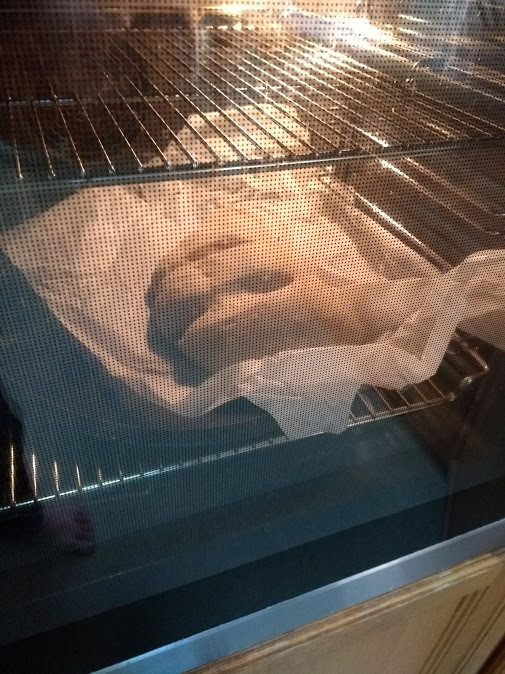
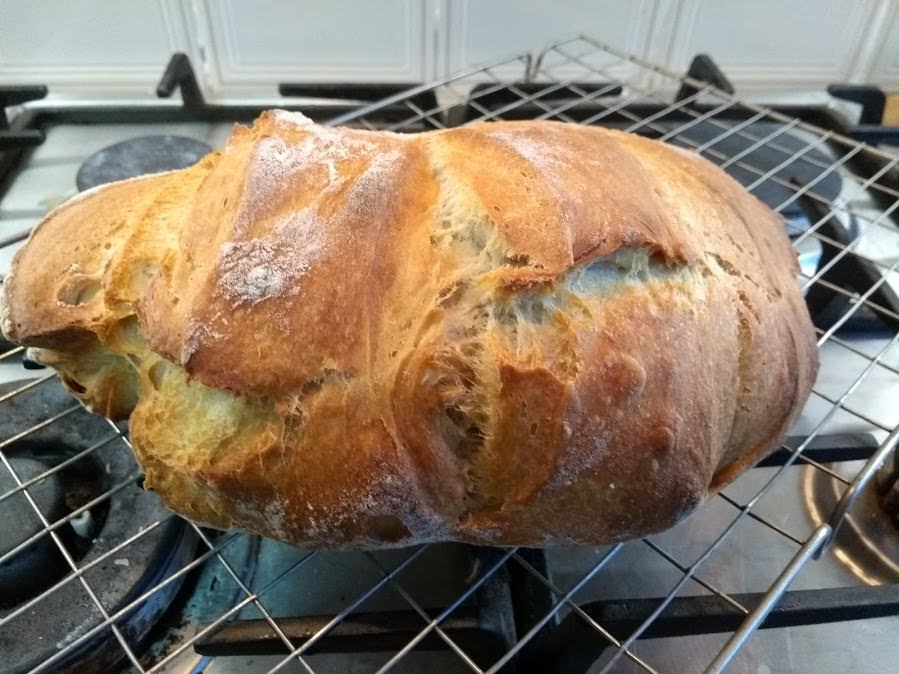
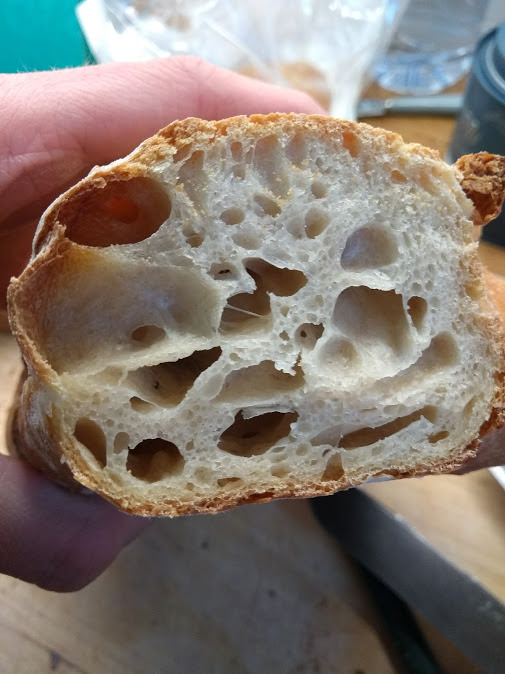



hotwatermusic
Well-Known Member
My wife got me a Kitchenaid mixer for Christmas. Real excited, made my first attempt with it today. Ciabatta that I may have baked a couple minutes too long.
 but still tasty...
but still tasty...

applescrap
Be the ball!
^^Looks good. I have been making bread and pizza every day since finding that recipe and have fridge tupperware full of dough. Am loving this simple bread. Only baking for 20 minutes so the crust isnt that tough for the kids. Any tips on making bread softer would be appreciated.




Steam in the oven helps^^Looks good. I have been making bread and pizza every day since finding that recipe and have fridge tupperware full of dough. Am loving this simple bread. Only baking for 20 minutes so the crust isnt that tough for the kids. Any tips on making bread softer would be appreciated.View attachment 551995View attachment 551996
A small-medium casserole dish of hot water 10-20 minutes before you load the bread will help
Brushing with butter pre and post bake.
Adding milk supposedly help as well, but I think that's more for the crumb. Read where one person brushed post bake with milk...
Last edited:
StonesBally
Well-Known Member
To make a more tender crust you need to add some sort of fat. Butter, olive oil, etc. That will also change the interior texture as well. Steam in the oven will also help the crust remain thinner. Another option is to bake a loaf, cool it, then store in a sealed bag overnight.
applescrap
Be the ball!
Thanks jwin and stonesbally. Appreciate the quick response and I am going to try some of these ideas. I am using steam by warming up steel pan on bottom shelf and dumping cup of water on it. It was just in recipe but I wasnt sure why. Glad to know it helps with this softer bread mission.
Last edited:
StonesBally
Well-Known Member
Yes steam doesn't really soften the crust per say, but it does keep the crust thinner. Hope that helps. When I make soft bread I usually do some sort of sandwich loaf that has butter and milk in it. Think of soft dinner rolls texture baked into a loaf shape. Also baking in a loaf pan as opposed to a boule or batard should help keep the crust more tender as well. Good luck, baking homemade bread is what got me started thinking about brewing years ago.

ericbw
Well-Known Member
- Joined
- Dec 11, 2012
- Messages
- 3,592
- Reaction score
- 1,225
Steam in the oven helps
A small-medium casserole dish of hot water 10-20 minutes before you load the bread will help
Brushing with butter pre and post bake.
Adding milk supposedly help as well, but I think that's more for the crumb. Read where one person brushed post bake with milk...
I add water in a sheet pan, and sometimes spray the sides of the oven. It's still pretty crusty. And the longer the dough sits, the crustier it gets. It starts out as regular yeast bread, but over about 2 weeks, the dough gets tangy. It also doesn't rise as much as when it's fresh.
I do agree with others that butter or milk might help make the crust a little softer.
ericbw
Well-Known Member
- Joined
- Dec 11, 2012
- Messages
- 3,592
- Reaction score
- 1,225
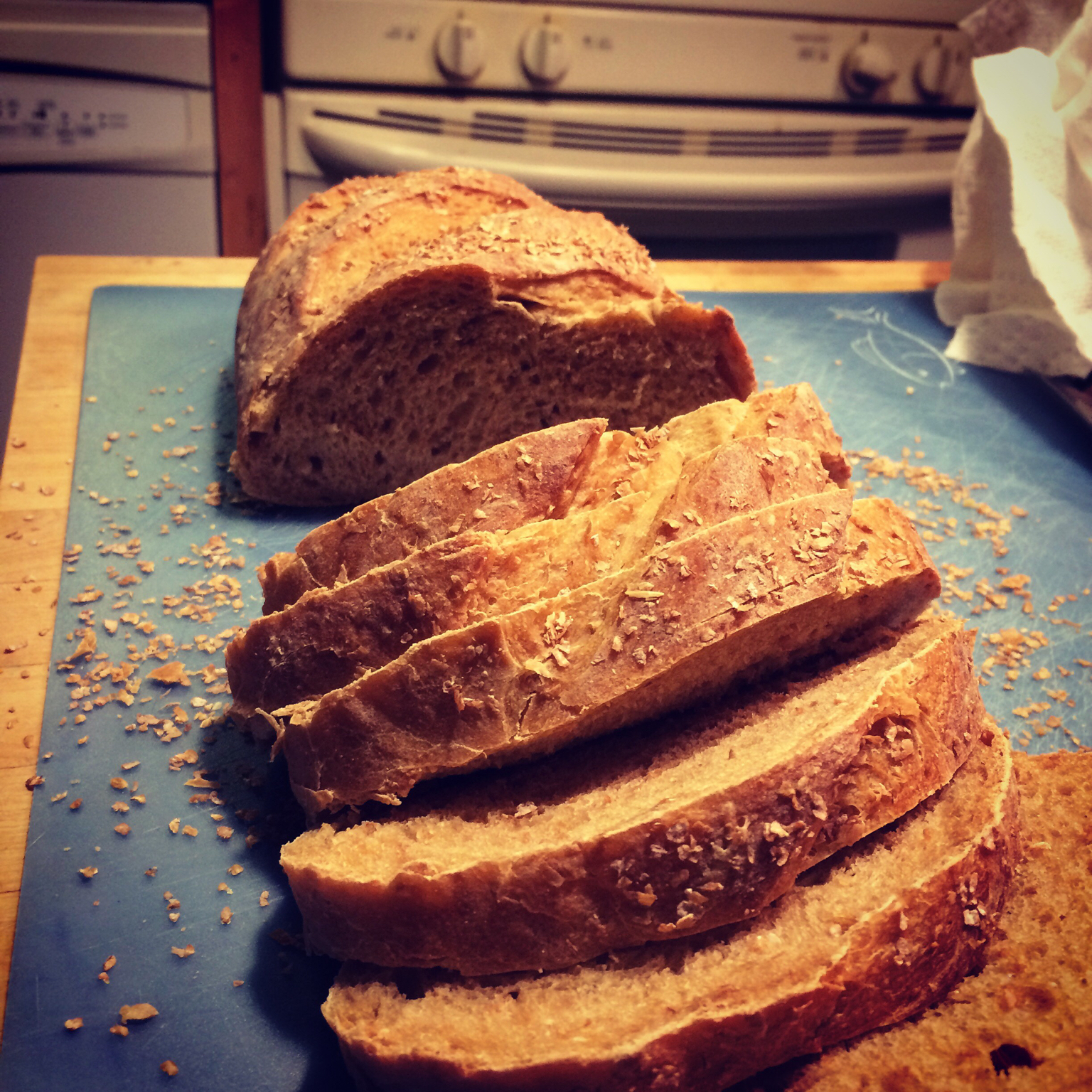
I have a perpetual sponge on the counter now (will explain later!), and this is some of that culture plus yeast. It’s brown from using D-90 candi syrup in place of sugar (secret ingredient that I just revealed). It has a little wheat bran in it, but it’s super fluffy!
hotwatermusic
Well-Known Member
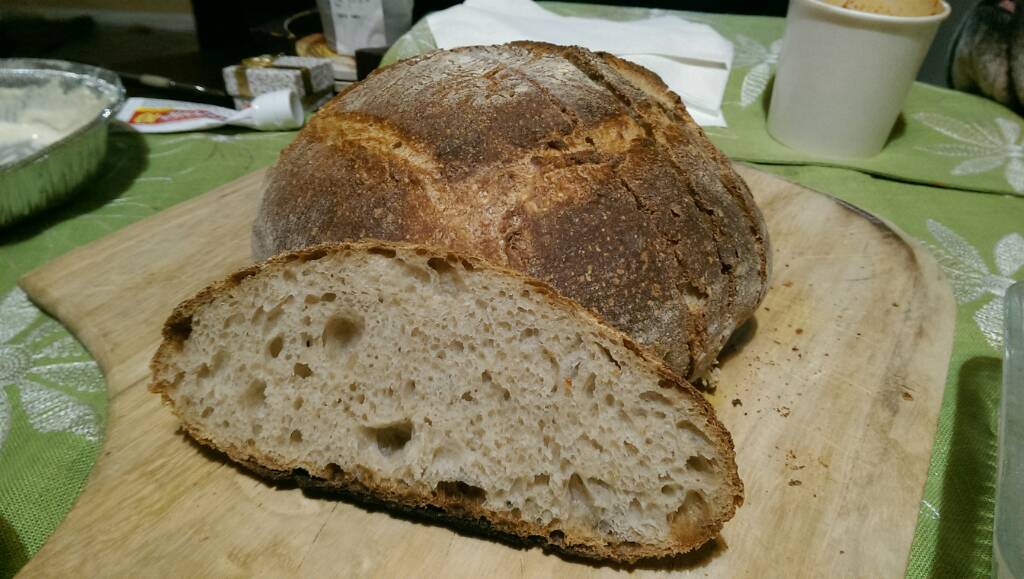
applescrap
Be the ball!
More bread, cooking it less time is what I have been doing. Not sure it is always done and it is moist. We tried to put it away but I am worried it will mildew.

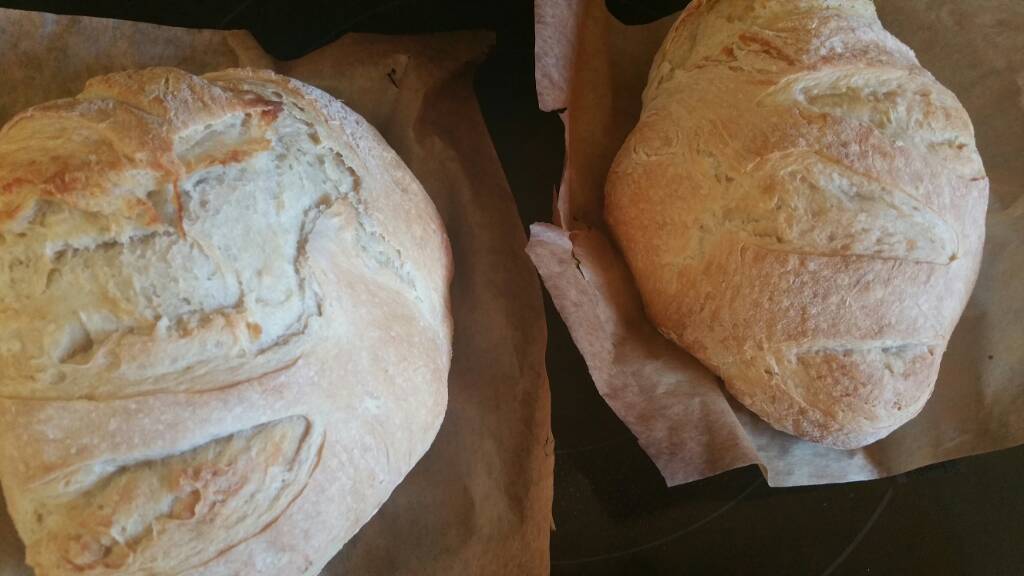


A thermometer reading of 190-210F is ussually done. When in doubt 200. It is a bit more reliable to take a temp than listening for the hollow sound on the bottom.
The art of baking comes with experience, knowing the feel of the dough when it is right. The humidity of the environment changes the dough. If is a little too moist you can always knead in a little more flour. Anyway, that's how I do it, maybe our pros can add their approach.
The art of baking comes with experience, knowing the feel of the dough when it is right. The humidity of the environment changes the dough. If is a little too moist you can always knead in a little more flour. Anyway, that's how I do it, maybe our pros can add their approach.
This is what I do to facilitate easy/even slicing for my sandwich breads. Bake, cool, stick it in a plastic grocery bag, twist it up tight - in the morning, easy to slice with the electric knife.To make a more tender crust you need to add some sort of fat. Butter, olive oil, etc. That will also change the interior texture as well. Steam in the oven will also help the crust remain thinner. Another option is to bake a loaf, cool it, then store in a sealed bag overnight.
StonesBally
Well-Known Member
I like to take lean doughs, those with no added fat to 205-210 on an instant read thermometer. I don't buy into the whole, " the dough changes with the humidity," thing very much. Most people keep their flour covered and the amount of moisture that dough will pick up from the air will be very minimal if not even able to be measured. If it were that humid you would be dripping I'm sweat before making the dough. I've been baking bread for over 20 years now and I always weigh the ingredients in the exact same percentage and the dough comes out the same every time. I'm not trying to sound condescending, but it just seems like one of those old cooking wives tales that have been passed on by experienced homecooks over the years to somehow claim a certain touch or art is needed to bake or cook. Presentation may be art, but cooking and baking are strictly science in my opinion. Again i don't mean to offend anyone, but I have a few pet peeves in the kitchen and that is one of them.
No offense taken. Flour is obviously hygroscopic, and that property of flour and other ingredients had been researched in the early 1900s. True that proper storage would delay absorption, (and modern environmental systems keep homes comfortable) but just because a person doesn't notice, doesn't mean it doesn't happen.  Here's a link-- probably more than you'd want to know about the importance of humidity control. https://www.polygongroup.com/en-US/blog/the-importance-of-humidity-control-in-bakeries/
Here's a link-- probably more than you'd want to know about the importance of humidity control. https://www.polygongroup.com/en-US/blog/the-importance-of-humidity-control-in-bakeries/
ericbw
Well-Known Member
- Joined
- Dec 11, 2012
- Messages
- 3,592
- Reaction score
- 1,225
I like to take lean doughs, those with no added fat to 205-210 on an instant read thermometer. I don't buy into the whole, " the dough changes with the humidity," thing very much. Most people keep their flour covered and the amount of moisture that dough will pick up from the air will be very minimal if not even able to be measured. If it were that humid you would be dripping I'm sweat before making the dough. I've been baking bread for over 20 years now and I always weigh the ingredients in the exact same percentage and the dough comes out the same every time. I'm not trying to sound condescending, but it just seems like one of those old cooking wives tales that have been passed on by experienced homecooks over the years to somehow claim a certain touch or art is needed to bake or cook. Presentation may be art, but cooking and baking are strictly science in my opinion. Again i don't mean to offend anyone, but I have a few pet peeves in the kitchen and that is one of them.
You measure by weight and NEVER add a pinch more flour or a splash of water because the consistency is off?
If your brown sugar is covered and stored like flour, it can get hard from moisture.
It is science, but we never measure the moisture content of the flour. If we did, we could calculate exact amounts.
No offense intended here either!
StonesBally
Well-Known Member
I can't tell the difference between a couple of grams in a 1000 g ball of dough with my bare hands. That's more what I am trying to say. I don't think many people out there that could. There are many things like this in the cooking world, things that were learned from experience, but now have been proven or disproven with science. I don't think a few grams one way or another are much to worry about for a loaf of bread. A large scale industrial operation may make a larger difference. Now if you are measuring ingredients by volume or don't always use the same flour, I don't know how you could get your hydration percentage within a few grams worth of flour or water like you can with a scale.
WAY too many unbelievable breads to note it individually but guys, these are flat out beautiful and you're SERIOUSLY killing me. Afraid I've not brought my starter out to play in too long (refreshed, but no bakes). I want to give our UPS guy a 90% rye, so now I know I'm out of excuses.
Thanks for sharing these. Like everything else on this site, the level of accomplishment is just incredible.
Thanks for sharing these. Like everything else on this site, the level of accomplishment is just incredible.
It seems as though you are saying, that because you can't feel a difference you think no one else can, or a very rare few can. I'm telling you I can feel when a dough is right. How it feels and how it behaves. I don't always use the same brand of flour, and my kinesthetic assesment of cookie dough, pie crust etc works as well. Looking forward to you sharing some images soon. CheersI can't tell the difference between a couple of grams in a 1000 g ball of dough with my bare hands. That's more what I am trying to say. I don't think many people out there that could.
applescrap
Be the ball!
Thanks for all the awesome tips. @Temptd2, electric knife eh. I have a couple that have never been used. I need to give them a try as cutting bread slices day in and out has been a little work.
Tried the butter after baking last loaf. Brushed it on and here is before and after. Not sure it softened it quite enough, but yum! And also perceivably less mess from crumbs. It seemes clear sealing it overnight will soften the bread which I have no doubt ran into before with bread and food I wanted crunchy but didnt stay that way after being sealed.
Was surely under baking the breads well under 200 degrees. Keeps them nice and soft and edible but seem a little doughy in taste and scent too. Thats why I was afraid of sealing them. This one not so much. Out of flour
I want a big sack next.


Tried the butter after baking last loaf. Brushed it on and here is before and after. Not sure it softened it quite enough, but yum! And also perceivably less mess from crumbs. It seemes clear sealing it overnight will soften the bread which I have no doubt ran into before with bread and food I wanted crunchy but didnt stay that way after being sealed.
Was surely under baking the breads well under 200 degrees. Keeps them nice and soft and edible but seem a little doughy in taste and scent too. Thats why I was afraid of sealing them. This one not so much. Out of flour
I want a big sack next.


applescrap
Be the ball!
^^ooh la la. What is it?
hotwatermusic
Well-Known Member
View attachment 554484View attachment 554485
I’ve been feeding the sourdough every day and making a loaf every 2-3 days. Baking in a cast iron pot with a lid (20 min covered, 20 min uncovered).
With the cast iron are you getting any over cooking on the bottom? How long are you preheating, and what temp are you cooking at?
I've gotten slightly uneven cooks thus far. Not major but I'm trying to dial it in further. Also, are you preheating closed or open?
Similar threads
- Replies
- 4
- Views
- 230
- Replies
- 4
- Views
- 295

